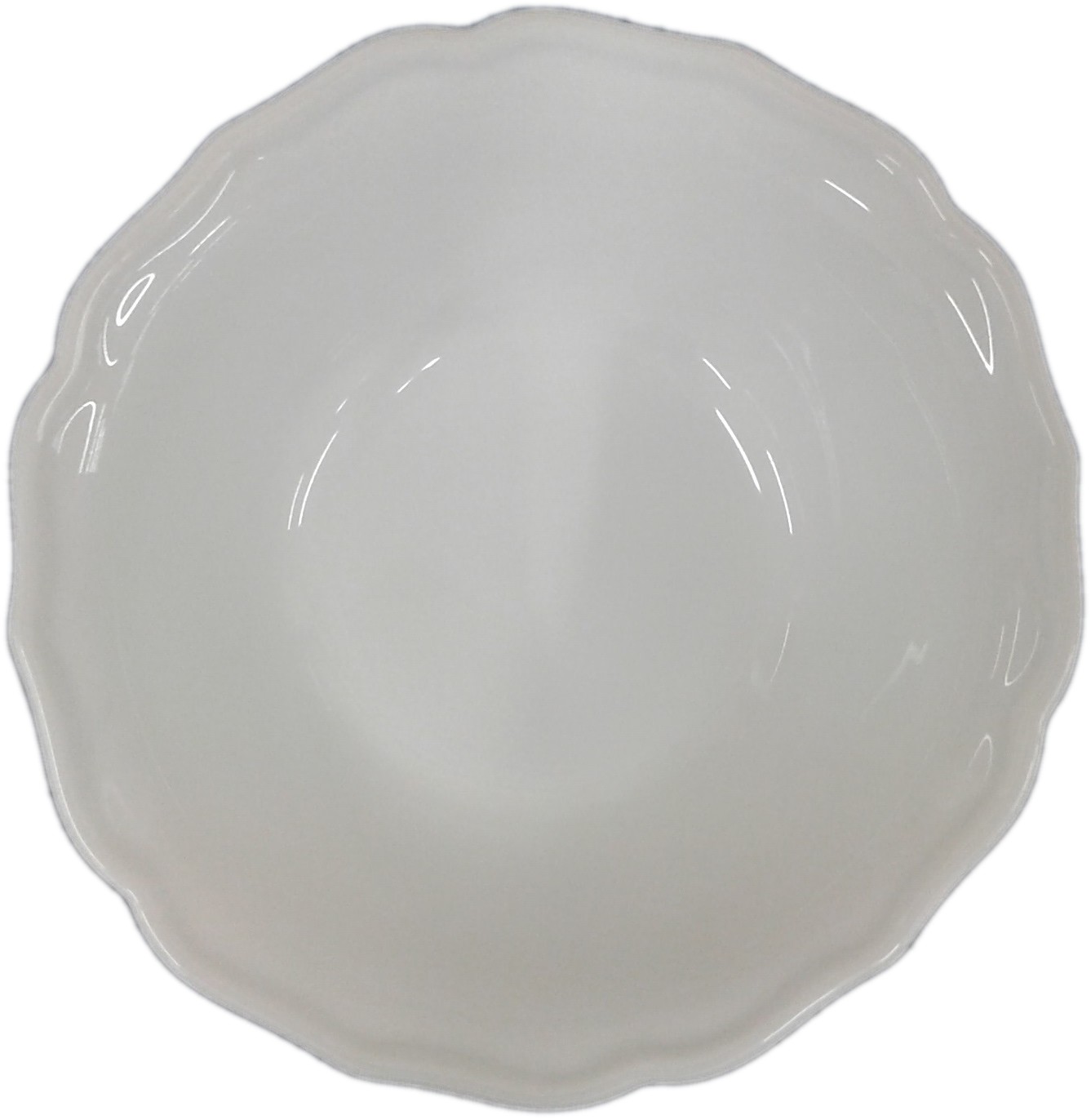Festoon Tableware

Festooned porcelain & ceramics
The term "festoon" comes from the French and describes an artistic decoration in the form of a garland. It is a purely artistic element consisting of individual arches and paragraphs. In porcelain language, the festoon refers to the pure rim design of a ceramic object, which artistically curves, usually also in different segments, to decorate the rim. Festooning is usually added to round shapes, giving them a playful, baroque character.
Festooned porcelain is far more elaborate to produce and therefore considerably more expensive than rim-smooth porcelain. The wear and tear on the moulds is considerably higher and the production of the moulds is far more difficult. In the catering trade, festoon moulds are often referred to as "coffee house moulds" and are often decorated with additional reliefs. The festoon, however, only refers to the shape of the curved rim and does not give any information about the material or the quality. Festoon dishes can therefore be produced in all possible qualities of the ceramic family; usually from porcelain, bone china, new bone china, magnesium porcelain or also from ceramic.
Many traditional porcelain manufacturers associate the name of their festoon moulds with cultural monuments such as "Luis IX", "Salzburg", "Vienna", "Monbijou", "Sanssouci", "Mozart" and others.
As these very aristocratic-looking shapes are not at all in keeping with the modern time, we at Holst Porzellan (as of 6/2022) do not carry any festoon moulds in our current range. However, as part of our OEM business, we do produce dishes with festooned rims for other brands.
